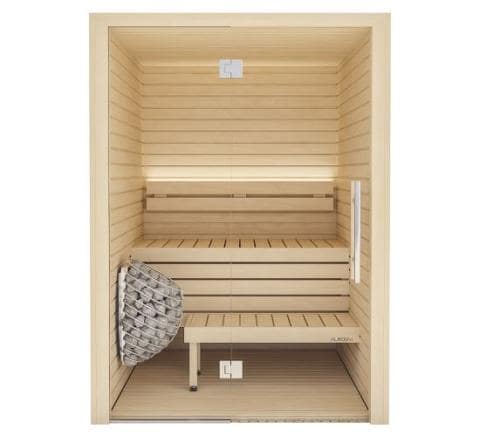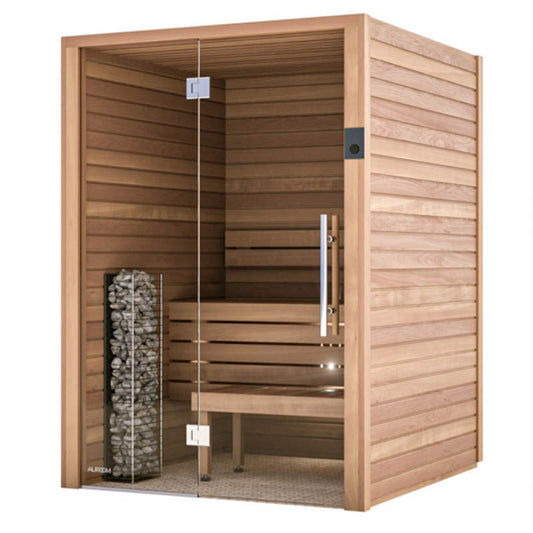Facts About Traditional Sauna Revealed
Table of ContentsThe 10-Minute Rule for Traditional SaunaThe Best Strategy To Use For Traditional SaunaTraditional Sauna - Truths4 Simple Techniques For Traditional Sauna
The majority of the weight shed in a sauna is water loss and is re-gained upon rehydrating. Without a doubt sauna can be a crucial component of a healthy and balanced weight loss program. To check out the differences between traditional and IR saunas, I will divide these right into proven, academic, and made distinctions.Hence, the best factor in the saunawhich goes to the ceiling straight above the sauna heateris typically in between 185 and 190 F. Traditional Sauna. Claims that a traditional sauna exceeds 200 F is simply not real and not relevant for electric saunas marketed in the US. The temperature for a far-infrared sauna is usually established between 120 and 140 F; however, unlike the standard sauna, the goal in and IR area is not to achieve a heat
Because of this, the temperature difference is virtually unnecessary, considering that profuse sweating causes both sauna types, yet the technique of heating the body is different. In an IR sauna the bather will really feel warm and will certainly sweat a lot, however at much lower temperature levels. Therefore, if the objective is to spend longer durations of time in the sauna, the IR sauna is a great choice.

Everything about Traditional Sauna
When the high temperature is achieved, the elements cycle on and off to preserve the high temperature level. Most typical sauna individuals appreciate putting water over the rocks to develop vapor to elevate sauna moisture degrees. The benefits of pouring water over the rocks include: making the room much more comfortable, moistening the nasal flows, and permitting the use of aromatherapy by blending important oils with the water.
In a far-infrared sauna, the warm waves permeate the body to successfully heat up the body and increase the body core temperature. To accomplish this enhanced temperature, Far-infrared emitters create infrared power which is close to the very same wavelength as that which the body normally emitsoften described as the "Important Variety" of 7 to 14 microns), so the energy is well gotten by the body.
When the energy enters the body, it causes the body temperature to boost and inevitably causes sweat. In an infrared sauna it is very important for the emitters/heaters to stay on virtually constantly. Considering that there is no mass of rocks to maintain warmth, the sauna will cool if the emitters shut off.
As pointed out over, the sauna bather in an infrared area wishes to place himself in front of running emitters to obtain maximum advantage from the warmth. The home heating time for the two areas can be extremely different, relying on just how the rooms are made use of. For a typical sauna, a bather must allow 30-40 mins for the room to attain a desired temperature level and to properly pre-heat the rocks.
All About Traditional Sauna
A well created sauna will generally achieve a temperature of 150-160 F in concerning 30-40 minutes (Traditional Sauna). For hotter temperature levels, the room may require to heat for a longer period. As soon as the room accomplishes established Continue temperature, the heating system will cycle on and off, typically operating about 50% of the time. The shielded walls and the warmed rocks will maintain the room hot and at secure temperatures.
To some, 15 mins was "wasted" while the infrared energy heated the wood panels as opposed to heating up a body, while others locate a pre-heated room to be a lot more comfy and think a raised starting temperature level is necessary to start sweating. The size of advised usage for each and every room is about the exact same (10-15 mins per session); nonetheless, because of the reduced air temperature levels and the capacity to feel the impacts of infrared warm much faster than a typical sauna, it is not uncommon for a person to invest a total amount of 20-30 minutes in an infrared sauna.
Conventional saunas tend to be larger (therefore utilize even more power) than infrared saunas, although typical saunas are definitely available in one and 2 person sizes. For a two-person standard sauna, 5x6 or 5x7 size is most prominent. The leading bench can easily seat two or three individuals and is likewise enough time to relax throughout the sauna session.


The average cost per kWH of electricity in the U.S. is approximately $0.11, so a 4.5 kW heater will certainly cost about $.50 to run for one hour, if the heating unit runs continuously for one hour. Commonly a sauna heating system will certainly compete 75% of the initial hour and 50% of succeeding hours on considering that the components cycle once the established temperature level is achieved.
Things about Traditional Sauna
A two person far-infrared space is usually physically smaller than a conventional visit this page sauna, typically concerning 4' x 4' or smaller sized. The IR furnace is usually 1.5-1.7 kW making use of a 120 volt 15 amp plug-in service. Because the space can be made use of earlier than a sauna room, we will browse this site certainly assume the area is made use of for to of an hour including warm up time.
There is a hardly ever discussed difference in the social experience between the two areas. While our culture has shed several of the social advantage of the standard sauna experience, it can be extremely socially fulfilling. From family members time in the sauna, to heart-felt conversations with better halves, to sauna partiesthe typical sauna experience can bring about intimate interacting socially.
The majority of greater end infrared rooms consist of colored light treatment, sound systems and full-glass fronts.